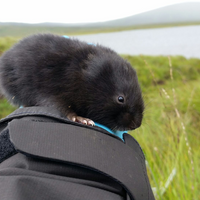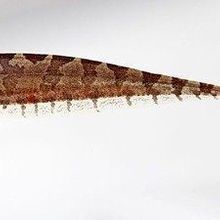Login
Subscribeamazon

Amazon Rainforest Nearing Savannah “Tipping Point”
Christie Wilcox, PhD | Mar 8, 2022 | 3 min read
Half or more of the world’s largest forest is in danger of transitioning into grassland, researchers say.

“Godfather of Biodiversity” Thomas Lovejoy Dies at 80
Lisa Winter | Jan 12, 2022 | 3 min read
The famous ecologist was a lifelong champion for conservation.

Scratchy Scalps Help Glue Together Pieces of an Ancient Past
Chloe Tenn | Dec 29, 2021 | 3 min read
Scientists find human DNA preserved in lice cement from the heads of South American mummies.

Book Excerpt From A Most Remarkable Creature
Jonathan Meiburg | Mar 30, 2021 | 5 min read
In Chapter 15, “Above the Falls,” author Jonathan Meiburg recounts an evening on a research expedition near the Rewa River in Guyana.

Surgisphere Sows Confusion About Another Unproven COVID-19 Drug
Catherine Offord | Jun 16, 2020 | 10+ min read
The company behind a now-discredited study on hydroxychloroquine also posted a report that has been cited by Latin American governments recommending ivermectin as a possible coronavirus treatment. Clinicians there say the effects have been extremely damaging.

Researchers Detect Land Animals Using DNA in Nearby Water Bodies
Nayanah Siva | Apr 27, 2020 | 5 min read
Monitoring the comings and goings of aquatic life with traces of DNA in water has become an established biomonitoring technique, but scientists are now using environmental DNA to assess terrestrial animals.

Newly Described Electric Eel Has Strongest Voltage Yet Measured
Kerry Grens | Sep 10, 2019 | 2 min read
The same study also finds there are three species of Electrophorus, rather than one.

Do Electric Fish Dream in Zaps?
Shawna Williams | Aug 1, 2018 | 4 min read
Studying electrical communication in the wild requires braving the Amazon jungle with sensitive equipment.

Amazonians Offer Clues to Human Childhood Development
Shawna Williams | Jul 1, 2018 | 4 min read
A study of Shuar children in Ecuador provides a window into how the human body responds to infection in the sorts of conditions that shaped our species’ evolution.

Image of the Day: Eye in the Sky
The Scientist Staff | Jan 30, 2017 | 1 min read
Scientists use remote sensing data from satellites to map biodiversity in the Amazon and Peruvian Andes forests.

Reconstructing the Effects of the Fur Trade in the Brazilian Amazon
Catherine Offord | Jan 1, 2017 | 4 min read
Researchers use a century of trade records to uncover differences in the resilience of terrestrial and aquatic species.

Historical Hunts
The Scientist Staff | Dec 31, 2016 | 1 min read
See images from a century of fur trapping and hunting in the Amazon basin.

Amazonian Reef
The Scientist Staff | Jun 30, 2016 | 1 min read
See footage from the expedition that discovered a coral reef hiding beneath the massive muddy plume at the mouth of the Amazon River.

Electric Fish Kin Wired Differently
Chris Palmer | Aug 29, 2013 | 2 min read
Two new species of closely related electric fishes discovered in the Amazon produce very different electrical signals: one AC, the other DC.
